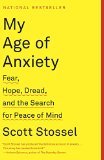Summary | Excerpt | Reviews | Beyond the book | Read-Alikes | Genres & Themes | Author Bio

How I Learned to Live with the Many Personalities Sharing My Body
by Kim NobleIt's difficult to fully comprehend the challenges and frustrations of living with Dissociative Identity Disorder (DID). It seems an impossible disorder to cope with – blacking out and waking up in unfamiliar places and situations, not having any memory of your different personalities' actions, people constantly blaming you for things you never said or did, having no sense of continuity – it's maddening. But what's truly scary is realizing that the brain's decision to split is actually its way of protecting a person from unbearably traumatic events – most commonly, childhood sexual abuse.
In her memoir, All of Me: How I Learned to Live with the Many Personalities Sharing My Body, Kim Noble (a name given to her at birth that she has now learned to respond to) describes, with great honesty and a bit of dramatic flair, her experiences living with DID. As a young child, Noble was often left in the care of neighbors, some of whom, she has learned with the help of her therapist, subjected her to unthinkable sexual acts. (A note to sensitive readers: these acts are not described in the book.) Her home life was unstable, and she was always getting into trouble at school for things she said she didn't do. Over time, her personalities, or "alters," started to take shape. It wasn't clear to me whether she started with one alter or if her identity had splintered into many pieces right from the beginning, but as Noble aged, each personality became more and more distinct. Readers learn about Haylee, an assertive, no-nonsense woman; Judy, who suffers from bulimia; Bonny, the responsible mother; Salome, a Catholic zealot; Sonia, who eats paper; Rebecca, who has attempted suicide; Ken, a 21-year-old gay man; Dawn, a woman who is in constant search of her baby Skye… the list goes on.
Of course, as these personalities were developing, Noble didn't know what was going on. No one did. People accused her acting out, and she gained a reputation as a liar. Then, after a series of truly horrible events, she found herself bouncing around from hospital to mental institution, solitary confinement to a girls' home, back to where she grew up. She was misdiagnosed with schizophrenia, drugged to prevent psychotic episodes, and kicked out of school. Noble's descriptions are clear, though at times surface, as if she's only interested in getting so close to certain memories. But who could blame her?
Nevertheless, I found myself swimming in unanswered questions. I wasn't always sure who was narrating, or how a memory of abuse was being recalled by a personality whose existence was created to prevent that memory from surfacing. I wanted to know how a project like writing a book was even possible when different alters – many unaware of each other – would take over her body and brain multiple times each day. I felt like I was waiting for her therapist to intercede and fill me in on the details. In this way, though at times frustrating, Kim Noble effectively communicates what she experiences as a person with DID. The confusion, the lack of control, the absence of linear time, the habitual return to "It wasn't me," the tacit acceptance that her life was out of the ordinary – the reader experiences it right along with her. It isn't until the second half of the book, when Noble comes to realize that she might actually be the host to dozens of different personalities, that she starts to piece together her past. And what a relief it is!
Because she has so many lives, so many stories, I felt like more pages could have been dedicated to the understanding of her composite story. I wanted to know more about how one of her personalities uncovered a child pornography ring (and was almost killed doing so), what it's like raising her daughter Aimee, or why certain alters can accept the DID diagnosis (i.e. that they share a body) while others can't. Most of all, I was curious to learn about how art therapy (see Beyond the Book) changed the course of her life. It's fascinating that of Noble's 20 major personalities, 14 of them turned to art as a form of emotional expression, and they each have a distinct and unique artistic style.
Despite my unanswered questions, or perhaps because of them, All of Me proves itself as a fascinating, illuminating glimpse into the very complex world of Dissociative Identity Disorder. Recommended.
More about Kim Noble
With guidance from a therapist, this video records some of the 20 personalities of Kim Noble.
Kim Noble explains her paintings:
![]() This review
first ran in the November 14, 2012
issue of BookBrowse Recommends.
This review
first ran in the November 14, 2012
issue of BookBrowse Recommends.

If you liked All of Me, try these:

by Scott Stossel
Published 2015
A riveting, revelatory, and moving account of the author's struggles with anxiety, and of the history of efforts by scientists, philosophers, and writers to understand the condition.

by Chloe Aridjis
Published 2013
Asunder is a rich, resonant novel of beguiling depths and beautiful strangeness, exploring the delicate balance between creation and destruction, control and surrender.
Your guide toexceptional books
BookBrowse seeks out and recommends the best in contemporary fiction and nonfiction—books that not only engage and entertain but also deepen our understanding of ourselves and the world around us.